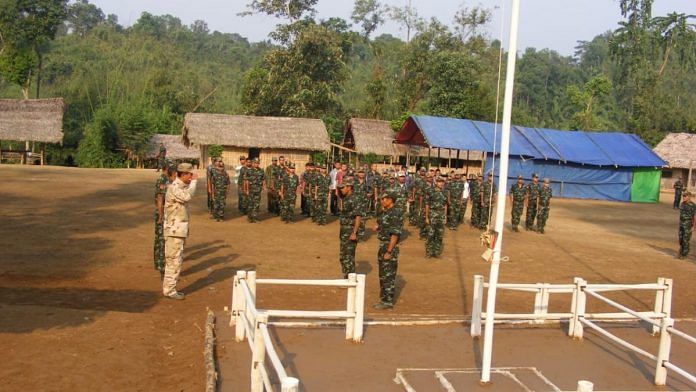A watch, a pair of shoes and a belt were recovered with Arunabh Gogoi’s remains in a thickly forested area near a training camp in Myanmar.
Or so his parents were told of their son, who had reportedly joined the banned outfit, United Liberation Front of Asom (Independent), under the alias Nibaran Asom. The information was passed on to the family in 2020 by security forces in Upper Assam’s Charaideo district.
“My son could have been in police or military service today, but he chose to hold weapons as an insurgent instead,” says his father, Kumud Gogoi. Fondly called ‘Thun’ by his parents, Arunabh was the eldest of three brothers. He was only 23 when he left home to join ULFA(I) around 2018.
His parents are unable to understand how their son, a school topper with a Master’s degree in Political Science who dreamt of becoming a professor, could join the rebellion.
Today, ULFA (I) is weakened, and no longer commands the same hold over the region as it did in the 1990s, but it is still actively recruiting teenagers and young men who blame government inaction, corruption and lack of opportunities for choosing the other side.
Like the Gogois, many families in the eastern Assam districts of Dibrugarh, Tinsukia, Sivasagar and Charaideo have lost their children to the insurgency.
Among the youth, disillusionment with a broken system is rife.
“Infrastructure has improved, but the unemployment problem seems to be looming large. For want of proper avenues for income from regular employment, youths take the easy way to impose ‘chanda’ (collection) in an organised way, and the more frustrated ones join militancy out of desperation,” says former Director General of Assam Police, Harekrishna Deka.
A source who was close to Arunabh said he died while “trying to escape into India”. He had gone to collect ration for the camp from the last village in Myanmar, barely two-three hours from the Indian border. While the other young men returned safely, Arunabh suffered a fatal fall from the hills inside the dense forest during his retreat.
The outfit, however, made no announcement of his death.
Arunabh spent his childhood and academic life at his grandparents’ home in Borhat under the Sapekhati circle of Charaideo and later moved to Moran in Dibrugarh under the guardianship of his aunt.
A topper in class, Arunabh passed his matriculation exam with 78 per cent and letter marks (80 or above) in three subjects from Nagahat High School in Sapekhati. He went on to complete his MA in Political Science from Jorhat’s Jagannath Barooah College, which is affiliated with Dibrugarh University.
He was engaged in a tent business before deciding to join the rebellion.
“He once played the role of a militant at a community theatre in our native village of Lakili Habi. Maybe he developed some interest then, but we have never supported ULFA’s objective of ‘Swadhin Asom’ (Independent Assam). My boy was obedient and calm. He might have come under bad influence,” says Kumud, a teacher at a government school near his village, for almost 35 years.
“When I see young boys, I imagine my Thun could have been one of them. I tell my students to become ‘Bhal Manuh’ (good human) first before choosing to be anything else. We had requested ULFA(I) chief Paresh Baruah to help us get his mortal remains, but got no response,” says Kumud, weeping over the loss of his child.
Though he is against ULFA’s idea of an Assam independent of India, Gogoi blames the government for failing to fulfil development promises and generate rural employment.
Communities are not able to fully trust the administration — there is a sense of insecurity that forces educated youth to take up guns, he says.
Also read:
A mother waits
Nineteen-year-old Budheswar Gohain walked out of the house wearing his black and white higher secondary school uniform. He told nobody where he was going, carrying only his phone and no other belongings.
That was in 2011, and there has been “no communication with the family” since. He is currently a serving cadre in ULFA(I) and is known by the alias Mriganka Asom.
His mother, 65-year-old Putoli Gohain, has been waiting for more than a decade for her third son to return to their family home at Dirak-2 village under the Kakopathar revenue circle.
“He left on his own accord and may return if he wishes to. Will he come back if I want him to? I have a few years to live — would he see me for the last time if he does not return home? We don’t know how to inform him,” says Putoli.
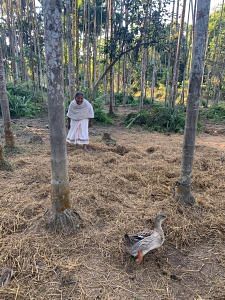
Putoli asks if we could send a word to him. “Will you be able to convey that his father is bedridden and I’m not keeping good health?” she asks, in a conversation over ‘tamul-paan’ (betelnut).
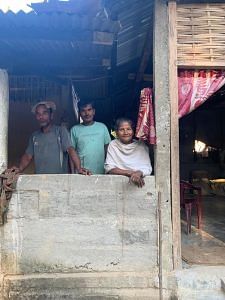
His eldest brother, 45-year-old, Moneswar Gohain, says Budheswar always detested the idea of an armed rebellion and instead wanted to join the Indian Army or Assam police.
“He had appeared for vacancies in the military and police – at least three-four attempts. He was even shortlisted for a post with Assam Police and had undergone training as well, but was kept waiting for a call letter. Budheswar said someone demanded a bribe for the job. I feel this is the reason he got frustrated and joined the insurgency,” recalls Moneswar.
He remembers how Budheswar helped him in the fields—from when he first held the plough to how he would carry him on his back when he was small. “Maybe, such memories will make him want to return. He was good at ginger farming and would carry his produce in the wee hours to the market in Dhola, about 25 kilometres away. He used to write scripts for Bhaona [a traditional Assamese art form] and enact the role of minister to the king,” says his brother, remembering the untainted, carefree days of childhood.
The family has about 12 bighas of farmland and a lemon garden spread across 4.5 bighas. Budheswar’s brother worries there won’t be anyone to look after the property or help him in the fields.
His mother lives in fear when she hears of “someone or the other” getting killed in security operations.
Also Read: ULFA(I) abduction of Quippo staff ‘desperate’ yet dark reminder of Assam’s insurgency past
Tinsukia and its borders
The tall Hollongs, with sunlight dappling through their branches, hold the promise of a peaceful drive, but the silence around can be unsettling. These trees and the ground where their roots delve deep have been witness to death, blood and secrets. The forest canopy and water bodies between Assam and Arunachal Pradesh have served as escape routes for ULFA insurgents to enter Myanmar — some on both sides of the border know these routes like the back of their hands.
The reserve forests along the far ends of eastern Assam include Burhi Dihing-North and South Block, Kotha, Namphai, Tinkopani, Tirap, Tipong, and their additions. These tropical rainforests cover the plains of the Burhi-Dihing river flowing through Tinsukia and Dibrugarh districts, and the foothills of the Patkai mountain range, which forms a major part of the India-Myanmar border.
The Burhi-Dihing in Assam and the Noa Dihing river flowing through Changlang district in eastern Arunachal Pradesh act as navigational aids for the movement of rebels.
During monsoons, the forest trail becomes risky because of its proximity to the banks. Activity generally occurs toward the end of monsoons or during the winter across shallow rivers and streams.
“It can take seven-15 days, depending on the route taken,” says a surrendered ULFA rebel (SULFA).
The other alternative for entering Myanmar is the Manabum reserve forest and the areas of Miao-Vijaynagar road in Arunachal. In November this year, the outfit took responsibility for an ambush on an Army patrol party along the Pengeri-Bordumsa road connecting Assam and Arunachal.
Also Read: ULFA’s Paresh Baruah ‘hopeful of positive result’ in Quippo abduction, says 60% Assam backs us
Between development and despair
Certain areas in Tinsukia are somewhat underdeveloped, but most of the towns have smooth roads and a clean and green environment. From early morning till late afternoon, plantation workers can be seen in the tea gardens. Farmers reap the winter harvest, and children cycle back from school, play football in the fields or enjoy their mid-day meal.
But moving out of townships into the remote border areas, there are only a few petrol stations along the entire route. Rows of betel nut trees around thatched huts, ducks splashing about in water bodies, and a few shops complete the picture.
The dome-shaped hills on the boundary in areas between Assam and Arunachal are underlain with coal—offering a strong contrast to the surrounding plains covered with timber and other vegetation.
“Administrative outreach to the people of rural areas seems to be lacking except for doles given through government schemes. Administration is HQ-oriented. I feel there has to be some structured outreach program by the district administration using the vehicle of indigenous culture,” says Harekrishna Deka, who spent his childhood in Tinsukia.
“The gap has to be reduced between the community and the administration, but not through political propaganda,” he adds.
Acknowledging the existing distrust and strife, Tinsukia Deputy Commissioner Narsing Pawar says the “Journey has now begun. The administration has started working toward the overall development of Tinsukia to restore it as the district’s commercial hub.”
“In undivided Assam, Tinsukia was once a flourishing town and a well-established trade centre, rich in natural resources. Unfortunately, it has lost a lot of years to insurgency. We are working on sectoral development now. A farm in the Dhola area is even exporting lemons to London. We are trying to make various departments step out of their silos and work together,” Pawar says, insisting that there has been a noticeable change in the last five years.
He lists some of the youth-driven initiatives taken, such as sending a group of students to New Delhi to train for the Union Public Service Commission (UPSC) under a corporate social responsibility programme and another 40 candidates to Guwahati to prepare for the state civil services examination. A coaching centre for students hoping to crack the IIT-JEE is also on the cards. More than 300 students are preparing for recruitment into the military and police.
“About 25 new industries would be set up in the next two-three months for more employment opportunities,” the DC says.
But SULFA rebel Hiranya Moran, 31, has questions. “If development actually happened at this pace, we wouldn’t have remained backward. The administration can set up 25 industries even in a month, but will Bhumiputras get absorbed in these industries?”
The administration has also been launching awareness drives against drug and alcohol abuse, considered to be a “big problem” facing the youth.
From 1 April to 8 December 2022, as many as 85 people were arrested for possessing illicit liquor in the Tinsukia district, while 36 others were arrested for illegally transporting liquor from Arunachal. A total of 137 cases have been registered under the Narcotic Drugs and Psychotropic Substances (NDPS) Act from January -November this year. It includes the seizure of 3.66 kg of brown sugar, 68.955 kg of cannabis, 16.477 kg of opium and 200 tablets.
Also read: Sheikh Hasina’s Teesta water calls turn desperate. But Modi is weighing national interest
‘ULFA(I) losing support’
ULFA became active in the early 1980s, getting a boost from the six-year (1979-1985) Assam Movement. The Assam Accord had dissatisfied many, and a section of hardliners from the student organisations joined ULFA with the objective of “restoring Assam’s sovereignty”.
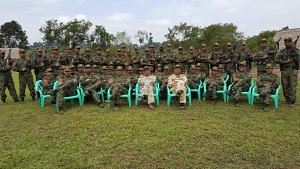
The rebel group had partitioned political and military wings. Paresh Baruah led the military wing as the outfit’s ‘commander-in-chief’ while Arabinda Rajkhowa headed the political unit. Baruah split from the pro-talks faction in 2012 after the outfit decided to suspend operations and sit with the Indian government for talks without preconditions. He now heads the ULFA(I).
His whereabouts are unknown, but defence analysts claim he is in a Chinese region neighbouring the Myanmar border and controls his rebel outfit from there.
Police and administration officials claim that people losing faith in ULFA (I) has affected recruitment in this region.
According to the Additional Director General of Assam Police (Special Branch), Hiren Chandra Nath, the outfit has lost 90 per cent of its support base in Assam.
“We see rapid development in the past few years – road connectivity has tremendously improved. There’s a sea change now. About 7 -10 years ago, even children used to play ‘ULFA ULFA’, but it’s no longer there. Some of the boys in these areas can’t understand the difference between legal and illegal force. Sadly, they don’t have a passion they are fully dedicated to. But people have realised the hollowness of this dream of ‘Swadhin Asom’ that can never be fulfilled,” he adds.
Also read:
Divided Support
Not everyone agrees with this peaceful and prosperous point of view of the government.
Locals in several areas feared expressing their thoughts, but a few surrendered rebels emotionally recalled their ordeal while also sharing their perspective on the outfit’s future.
“Some villagers still think that because the ULFA exists, some good might happen,” says a 34-year-old former rebel from the Jagun area who returned from the militant camp in 2019 after spending two years with the outfit. He mentions how people in certain areas of the eastern region feel that the rebellion is “justifiable and their grievances will be solved someday.”
He says that even though the insurgent group has grown weaker, it will survive.
“Youngsters will keep going, but maybe some will find enlightenment like I did and return to start a new life,” he says.
Former ULFA(I) cadre Hiranya Moran alias Goda Asom from the Kakopathar area, had spent almost five years in Myanmar before escaping to India and surrendering to the Assam Rifles in December 2020.
‘Swadhin Asom’ is not achievable in today’s time, he says.
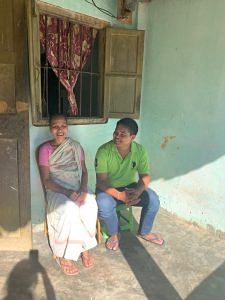
“Assam is rich in tea, timber, coal, forests and water resources. We could have achieved a lot on our own,” he adds.
SULFA cadre Someshwar Hatimuria alias Jyotikomol Gogoi, 62, from the Kengia village in Tinsukia’s Margherita, had joined ULFA in 1988 when the organisation was just about a decade old. He gives a guarded response on youth joining the insurgency.
“I wouldn’t ask someone to join ULFA(I), nor would I ask anyone to return. It is their decision. Had I not been caught during ‘Operation All-Clear’ in Bhutan, I might have still been in ULFA(I). But I have suffered so much that dreaming about ‘Swadhin Asom’ is impossible now, and I am 100 per cent sure it cannot be achieved,” he says.
Hatimuria feels the government’s efforts to develop the region have had some impact.
“I can see how the government has built houses and roads for villagers, instilling a sense of freedom in their minds. Why would they want sovereignty?” says Hatimuria, who devoted 24 years of his life to the outfit, but now left struggling.
Tinsukia, Dibrugarh, Charaideo, and Sivasagar in Upper Assam are among the eight districts considered ‘Disturbed Areas’ under the Armed Forces (Special Powers) Act or AFSPA. AFSPA was imposed in Assam in November 1990 and has since been extended every six months, with the state government reviewing the security situation.
Also read:
Motock-Moran youth ‘dissatisfied’
Not all ethnic groups have benefited from the government’s push for inclusivity, employment generation and development. The warrior community, Motock-Morans, have been forgotten, first by the colonisers and now the government, they say.
Historically, the Motock-Morans, who are known by the generic name of Moamariyas and are the aboriginal tribes of the Brahmaputra Valley, are considered to be fearless.
They even had their own independent kingdom before the advent of the Ahoms. The Motock kingdom of old Dibrugarh thrived between 1805-1842 and comprised Lakhimpur, Tinsukia and present Dibrugarh districts, according to scholar Sri Kumar Dahotia.
“If one looks at the social profile of ULFA leadership, it is essentially an organisation led by Ahoms and Motock-Morans,” says Dr Nani Gopal Mahanta in his book, Confronting the State: ULFA’s Quest for Sovereignty.
Naba Moran, president of the Moran Students’ Union, describes the leaning toward insurgency as “a creation of the government”. The community has been dominated since Colonial days and left entirely bereft of education and development.
“The government has failed to mould the people as assets for society. The Moran people are not willing to be dominated by anyone. But this domination started long ago — since the British introduced ‘Kaani’ (opium) to our ancestors, our Gurus, to subdue them and to cripple the community. The impact of Kaani is so strong that it lasts for seven generations, of which we are a part,” he says.
He points out that other communities have moved toward development and upliftment during the three decades of insurgency. “But the Moran and Motock people have been lagging behind for the past 50 years. The light of education did not reach us,” says Naba
He acknowledges that insurgency, too, is to blame. Teachers weren’t willing to come to their schools. “And in both schools and colleges here, we still don’t have subject teachers. There was no contact with the world outside, and between the ULFA and the Army, it is the people who suffered.”
Moran says students couldn’t go to class because of the insurgency. “We don’t have a single civil servant from our community,” he adds, while also raising concern on the recent spate of drug abuse among the youth.
In his book, Mahanta explains how ULFA was a movement against the domination of Hindi-and Bengali-speaking people in Tinsukia, Dibrugarh, Digboi and nearby areas. The anger is palpable even today over the monopoly of indigenous Assamese people in trade and commerce.
SULFA cadre Hiranya Moran had “voluntarily” joined the outfit in 2016. A student leader in Kakopathar town, Hiranya was aggrieved at his community being “treated unfairly” by the administration and government and decided to seek solutions through an armed struggle.
“The government has been favourable to outsiders instead of the Bhumiputras [indigenous Assamese]. For years, we have suffered – be it the Bangladeshi infiltration or outsiders taking centre stage in trade and commerce,” says Hiranya, mentioning that youngsters are “still joining ULFA(I) because of government apathy.
Hiranya, who’s now an entrepreneur, complained about not having witnessed a single football match in Kakopathar since he grew up.
“We have two big fields here, but no sports event ever held. Just kicking around a football does not help our children learn how to play. It’s the government’s responsibility to identify talent. We have levelled roads here. Why can’t they approach us?” he says.
But it’s never so cut and dry. Education was never prioritised, even within the community, and it is a ‘failing’ that Hiranya acknowledges.
“The government has made quality schools with good infrastructure and all amenities, but it is parents who should motivate their children to study. They are to be blamed if their children drop out of school. And if Kaani wasn’t already doing the damage, our youngsters now have taken to drugs” he adds.
According to ADGP (SB) Hiren Chandra Nath, there has been no new recruitment to the outfit in over six months.
“The cadre strength has been reduced to about 150-200. To make it seem like it’s a pan-Assam movement and to show that ULFA is not restricted to only three districts of Tinsukia, Sadiya and Dibrugarh or largely among the Motock-Morans, they started recruiting youth from all communities including few Nepalis and Muslims, mainly through social media platforms,” he says.
Defence sources have revealed there are three ULFA(I) camps presently active under their Eastern Command, led by senior leaders: The Arakan Gut or 779 (possibly based on ULFA’s Raising Day of 7 April 1979), led by Arunoday Dahotia, the Nilgiri Gut or Maimong under Michael Deka Phukan and the Everest or Hoyat camp under Nayan Medhi.
The Taga camp demolished in 2019 is also reportedly being revamped. The Myanmar Army withdrew presence in Taga months ago, allowing rebels to reoccupy that zone in Hukawng Valley.
Today, ULFA(I) may be weakened, and the idea of ‘Swadhin Asom’ all but dead, but seeds of dissonance and conflict remain. It’s where the youth of Tinsukia turn to when all else fails.
“Nol maari gojali ulaai goise (A seedling has emerged even after all the weeds have withered out),” says a former rebel in Assamese.
Karishma Hasnat is an independent journalist from India’s Northeast. She tweets @karishmahasnat. Views are personal.


